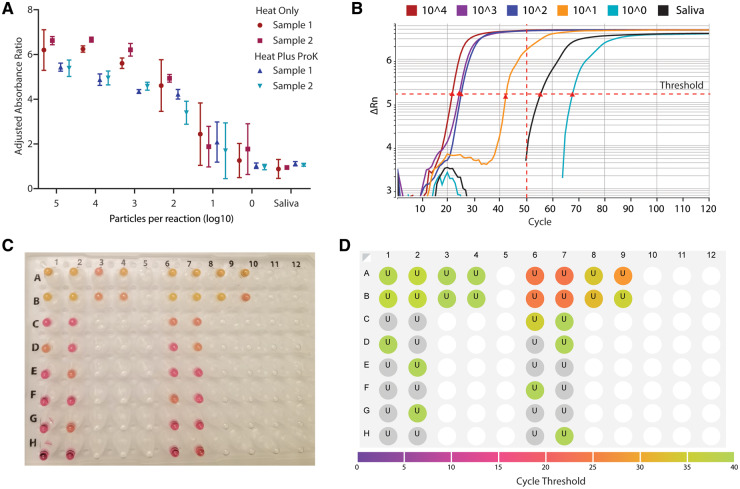Fig. 2.
Establishing high-throughput LAMP assays with quantitative readouts. (A), RT-LAMP assay was adapted to a high-throughput 96-well plate format with a quantitative absorbance readout, achieving a limit of detection <102 particles per reaction from saliva samples. Absorbance for 430 nM (yellow) and 560 nM (red) wavelengths was measured before and after the LAMP reaction and normalized to negative controls. Heat indicates 55 ˚C for 15 minutes, 95 ˚C for 3 minutes, with or without proteinase K (ProK). Two biological replicates were each run in triplicate. (B), Real-time quantitative fluorescent LAMP results are shown for a dilution series of particles in saliva. Change in fluorescence (delta Rn) is monitored over 120 ‘cycles’ of 30-second incubations at 65 ˚C. Cycle thresholds (Cts), indicated by red triangles, represent the time at which total fluorescence reaches a given level. Samples with higher viral loads reach this threshold earlier. Nonspecific amplification may arise after 50 cycles, corresponding to 25 minutes. (C), Colorimetric and (D), fluorescent results for the same reaction show that the fluorescent dye does not interfere with colorimetric interpretation. Results are concordant with colorimetric LAMP, and fluorescent results are more quantitative.

